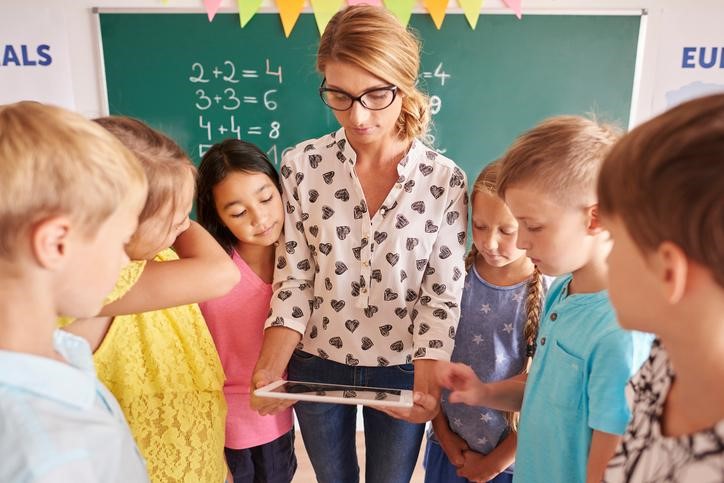
In honor of Earth Day, Peachjar brings you a guest blog from writer, editor, and musicophile who's passionate about vegetarianism and sustainable eating - Lauren Pezzullo. As an editor for Modernize, Lauren writes about energy-efficient living in the home. She's currently writing her debut novel.
As all teachers and parents know, one of the most effective ways to help children learn is through experience. Teaching our children about the environment, our impact on it, and ways to improve our relationship with it is an essential and formative part of education. While there are many ways to incorporate green theories into classroom curricula (something we’ll discuss in more detail in Part 2 of this article), lesson plans mean nothing if they aren’t coupled with positive behaviors. We’ve come up with some exciting and fun ways to green your classroom with the help of your students.
Monitor and adapt energy use
Perhaps our largest and most detrimental impact on the Earth is our consumption of energy. Up until very recently, the vast majority of our electricity and HVAC (heating, ventilation, and air conditioning) needs were met with non-renewable energy sources. This meant that once the resources required for fuel had been used up, they could not be replaced. Thankfully, the introduction of renewable energy sources in many public buildings and residential areas has changed the way we think about and consume energy. If your school doesn’t already use a renewable energy source such as solar panels or wind turbines, consider discussing the possibility of renewable energy for your school with the school board or district office.
While large-scale energy changes take time, there are ways to decrease your classroom’s energy consumption immediately. Install an energy meter in your classroom so students can track and adjust heating and electricity settings to maximize energy savings. Green practices such as switching off lights, using less water, turning off heating and air conditioning units, and opening windows when the weather is nice require no permission from the school. Plus, these eco-friendly habits will show students how they can take control of their own energy usage. If you can get permission for other small changes, discuss low-flow taps and toilets, energy efficient lighting, smart thermostats, and upgrading to new windows and more efficient HVAC units to help further decrease your school’s energy use. Perhaps the easiest solution to your classroom energy consumption is to get outside whenever possible (remembering to turn off the lights and computers when you go, of course).
Reduce, reuse, recycle
Because most schools already teach about the importance of recycling and waste reduction, making your classroom a waste-free zone is a relatively simple step. Add recycling bins to your classroom for paper, plastic, and other recyclables—this will model positive waste reduction habits on a daily basis. Establish a classroom recycling committee, measuring your waste, and turning the collection into a competition so the group with the largest amount of recycling wins a prize. Regular classroom waste management can easily be incorporated into lesson plans as well; stay tuned for more details about ways to bring recycling into your curriculum.
If your school already has an established recycling program, there are other ways to get students interested in reducing waste and reusing materials. Offer a “reusing” or “gifting box”, where students can drop off items they no longer want or need to be regifted or donated at a later date. Another simple way to reuse items in your classroom is through junk modelling: plastic bottles, cardboard boxes, and other discarded household items can be used creatively for both play and class projects alike.
Go off grid
Perhaps one of the easiest ways to incorporate environmentally friendly practices into your classroom is by actually experiencing the environment around you. Occasionally opting for a low tech lesson—free from computers, tablets, smart boards, and televisions—allows students to go outside and use nature’s classroom instead of observing it from a screen. This will understandably impact your curriculum planning, so make sure to read the second part of this article to find out more ways to incorporate green ideals into your classroom lessons.
Be kind to the environment
In addition to decreasing carbon emissions, using non-toxic materials throughout your classroom can help you to help the environment while teaching your students about caring for the world around them. If your budget and resources allow, choose green classroom supplies such as water-based paints, acid-free glue sticks, petroleum-free crayons (made from beeswax or soy), and materials without PVC or BPA to minimize the risk of toxins entering your classroom environment. Whenever possible, choose recycled paper, toilet paper, and paper towels—and ask your school board to consider natural cleaning products, rather than chemical-filled commercial alternatives. This last request may not be possible for your school district, but you can easily turn it into a chemistry lesson by letting students experiment with water, baking soda, and lemon juice to see just how well they clean up messes.
.png)